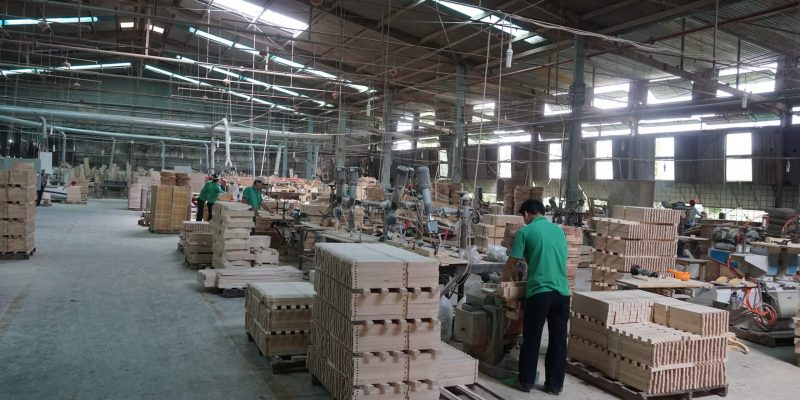Contract Manufacturing, or CM, in short, is a manufacturing arrangement in which the buyer brings a fully-developed product design to a manufacturer and enters an arrangement to have dedicated production capacity.
Historically, contract manufacturing is a continuation of a product which the original buyer had manufactured in their home country – before manufacturing abroad. However, in recent times the term “CM” refers to a new product which is developed in overseas factories.
How Does Contract Manufacturing Work?
Contract Manufacturing works by hiring a CM contractor to do the manufacturing on a product. The buyer (usually a Western company) retains the Intellectual Property in the design and branding of the product and the factory owns nothing.
The division is made clear in legal terms. However, in certain cases, it may happen that a CM contractor decides to slightly modify the product and start selling in competition to the original product. If you hire a CM contractor, you have to draft a clear written agreement between you and the contractor.
Pros Of Contract Manufacturing:
- The Buyer is allowed to use their own Intellectual Property: Design and branding.
- The Buyer can source factories from the entire supply chain and retains the right to choose which sources he wants to work with, increasing the quality of the product.
- The Buyer can cancel a contract with an existing CM and switch to another CM contractor.
- The Buyer retains control over the manufacturing process in matters such as total cost, quality, and delivery.
Cons Of Contract Manufacturing:
- The Buyer has to pay for R&D including design, tools, and supplies.
- The time to take the product to the market is longer, depending on the contractor.
- The delivery plan has to be adjusted once the factory gradually starts amping up output.
2 Sub-Types Of Contract Manufacturing // OEM & ODM
Designing and manufacturing products overseas with Contract Manufacturing currently has two popular sub-types: OED and ODM. OEM stands for “Original Equipment Manufacturer” and “OED” stands for “Original Design Manufacturer”.
- Original Design Manufacturer, or ODM in short, is used by buyers who already possess the Intellectual Property of a product and wish to bring it to the market by manufacture overseas.
- Original Equipment Manufacturer, or OED, is used by buyers who collaborate with the contractors to produce a unique product and manufacture it overseas too. Depending on your needs, you will likely either hire an OEM or an ODM contractor.
Type_01 // OEM: Original Equipment Manufacturer
Original Equipment Manufacturer meaning (OEM) // OEM is a contractor who works with businesses and corporations that own the Intellectual Property in order to manufacture their product. This type of manufacturing is popular for large companies outsourcing: Apple, Dell, Microsoft, 3M, Samsung, and other Western brands outsourcing their manufacturing to China and other countries.
OEM means their branded logo is shown on the product and they retain the rights to the intellectual property while a factory manufactures it for them. Example: Apple manufactures the iPhone in China under OEM contracts because they produce the designs and ideas in the US while the manufacturing is done in China. Large companies utilize OEM contractors in order to minimize their manufacturing costs and increase their production leverage.
- Companies pay an OEM contractor (sometimes marketed as a “solutions provider”) to hire factories or use their own capacity to manufacture the product, deploy production and testing, and train employees.
Example of OEM: Apple retains full control over its OEM manufacturing process and they control the supply chain in order to guarantee reliability for their high-end products. Similar practices are employed by Dell to manufacture their laptops or M3 to manufacture their medical equipment.
Pros Of Original Equipment Manufacturers (OEM):
- Fast track to manufacturing because the product is already designed and contractors only have to source supplies to manufacture.
- Low R&D costs in the event the product has to be adjusted for existing factory supplies.
Cons Of Original Equipment Manufacturers (OEM):
- Difficulty changing contractors. If you work with an OEM contractor, you will need to make sure you’ve checked the legal agreements and supply chain to ensure you’re satisfied with the parts. In China, OEM’s keep their list of suppliers anonymous.
- Costs can be high for the same reason it’s hard to change the contractors – lack of transparency. The contractor doesn’t have to reveal how much the parts cost them to the source.
- Product quality can be impacted if the OEM supplier decides to change its sub-contractors. If the materials change, this will have an effect on the final output.
- The supplier might get greedy and ask for rate increases if your product turns out to be very profitable.
- OEM contractors select their own payment terms and insurance policies which you must comply with.
Type_02 // ODM: Original Design Manufacturer
Original Design Manufacturers (ODM) Meaning // ODM are typically contractors who help develop the Intellectual Property of the product before taking it to the manufacturing stage. ODM contractors help construct the product and pitch ideas that help the buyer visualize a project concept. Once they’ve agreed on product designs and ideas, they help the buyer manufacture that product and then give it their own brand name.
In essence, the buyer serves as a distributor for the manufacturer. ODM’s are very popular for mid-sized businesses. Example: A buyer might hire an Electric Bike ODM contractor to manufacture a unique electric bike that contains the brand insignia of the buyer. ODM contractors are more collaborative and they tend to be open to new ideas, as long as it’s within the boundaries of their manufacturing capacity.
Pros Of Original Design Manufacturers (ODM):
- Experience in a specialized market. ODM contractors specialize in industries and have manufacturing capacities to produce within those industries. Example: Electronics, vehicles, medical supplies, toys, etc.
- Low R&D costs to develop the new product and manufacture it since the contractor has experience producing similar products.
Cons Of Original Design Manufacturers (ODM):
- The ODM contractor owns the design which makes changing anything difficult.
- Hard to change ODM contractors because there are usually very few factories that can manufacture that product.
- High risk of IP theft, in case the contractor has stolen the designs from a competitor. This can cause problems at home if you get sued for stealing a design from a company that owns the original design.
- The manufacturer might decide to cut the buyer out of the equation if the product makes a lot of sales.
- Difficulty negotiating payment terms and liability.
How To Select CM’s Based On Volume
If you’re going to choose between a general CM who can do everything vs. a specific ODM/OEM, here’s how you should approach this based on the volume:
- Low-Volume Contract Manufacturing: For low-volume orders, opt for an ODM contractor because they can manufacture a branded product for you but they won’t be tempted to steal your design.
- Mid-Range volume Contract Manufacturing: For mid-range volumes such as over dozens of containers, opt for an OEM because they’ll be used to dealing with high-volume clients.
- High-Volume Contract Manufacturing: For very large orders such as corporations like Apple, opt for a large CM contractor to control your overall cost as you’ll have to use different factories and you need connections to contractors who can manage multiple factories and train staff simultaneously.
Final Thoughts on Contract Manufacturing
Contract manufacturing is one of the most common ways to get your product manufactured. That being said, it’s important to keep in mind what kind of production you are looking for as that determines the types of factory you contact and how your production agreement will work. Selecting and working with a manufacturer is much easier when you are both on the same page and have an understanding of what is expected from each party.




